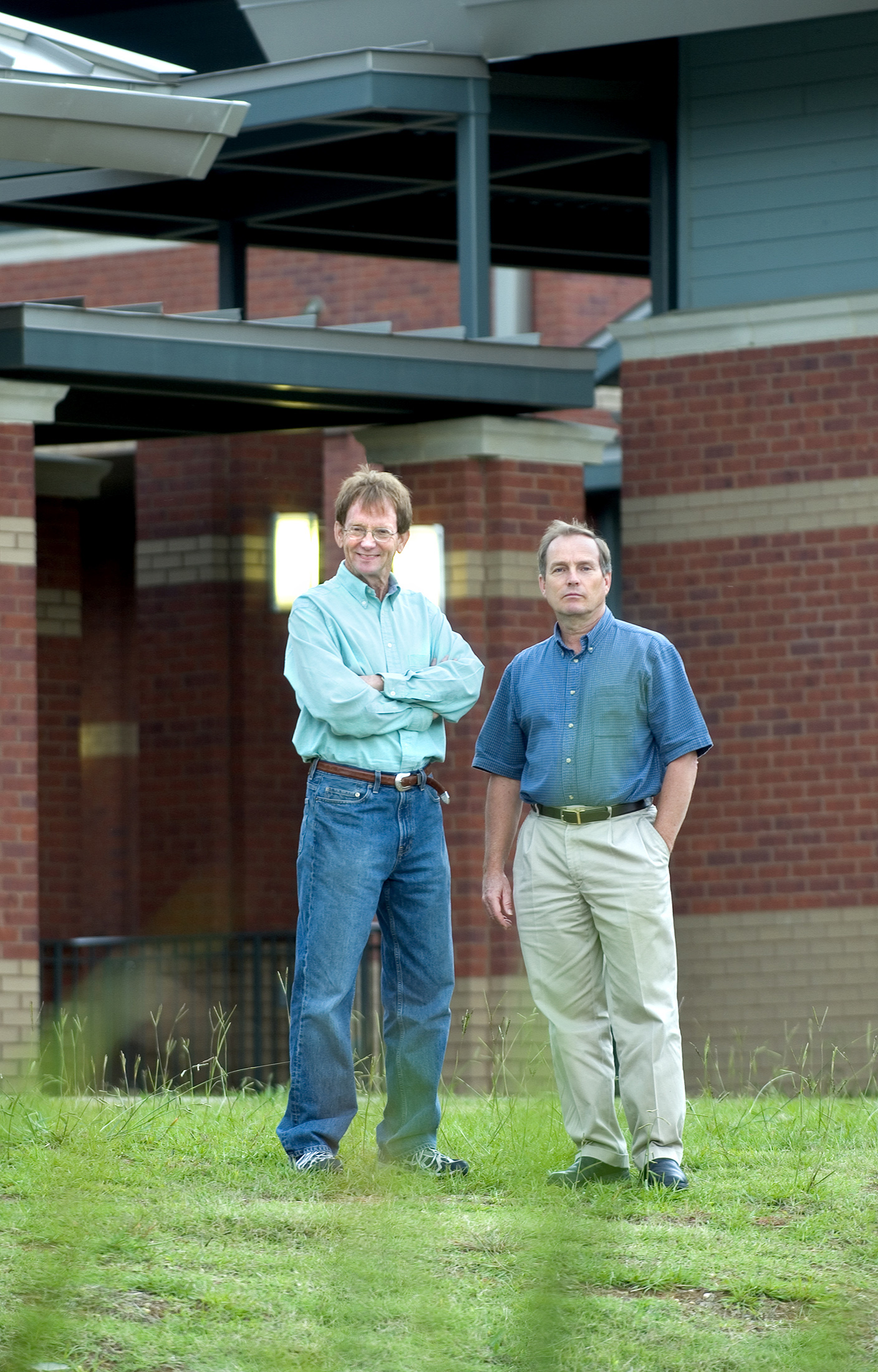Contact: Maridith Geuder

Pete Melby (l) and Tom Cathcart co-direct the Center for Sustainable Design at Mississippi State University. They helped plan features of the MSU facility behind them.
On a recent fall day, Mississippi State landscape architecture professor Pete Melby sat in his university office with windows open to a mild 66-degree outdoor temperature.
In addition to enjoying a pleasant day, he was quietly continuing a personal quest to promote what his two-year-old academic building is designed to do: save energy. That's because the new landscape architecture facility that opened in December 2002 was planned from the ground up--literally--with a very focused eye toward conservation.
Melby and biological engineer Tom Cathcart are co-directors of MSU's Center for Sustainable Design. They are part of a faculty team that helped guide the building's shape, location, interior layout, building materials, and construction details.
And, there is one clear indication that their hard work is paying off. "This building is using 40-70 percent less energy than the regional average for office buildings," Melby said.
In addition to working closely with state Bureau of Buildings officials, the project leaders received assistance from state Sen. Hob Bryan, former chair of the Finance Committee. In 2000, the Amory legislator helped get passed a $3.6 million bond issue for construction of the building just off Stone Boulevard near Thompson Hall.
"This building is proof that new structures can be built without requiring significant energy for heating and cooling," Cathcart said, adding that state law now requires that new buildings incorporate energy efficient designs.
Among the single-story facility's many energy-savings features:
--Wide overhangs to block summer sun and allow winter sun for heating;
--Tall, clerestory and dormer windows to allow natural lighting; and
--Highly reflective roofing material.
To further improve energy efficiency, those using the building also must make judicious thermostat decisions. During temperate seasonal transitions in fall and spring, occupants are encouraged to open full-length windows and forgo mechanical heating and cooling.
In winter, temperatures are maintained at a constant 70 degrees; summer, 70-74 degrees. ""ith a shelter like this that has a lot of thermal mass, temperatures should be within a 5-to-8-degree range naturally," Cathcart explained.
Last year, the energy costs for the nearly 21,000-square-foot, single-story glass and brick structure were approximately $16,200. Using Southeastern energy use-rate averages, a conservative energy requirement for the same-sized building likely would be around $27,600.
By comparison, Melby and Cathcart estimate that use rates for larger adjacent buildings would result in energy costs of nearly $47,000.
"There are compelling reasons to take more control of energy consumption in this nation," Cathcart emphasized. "Renewable energy resources will be depleted within 100 years, particularly petroleum and natural gas. That is why we must be forward looking."
Cathcart said energy independence also supports a national security goal by making the nation less vulnerable to supply disruptions. "The more progressive our energy policy, the more we insulate against that possibility," he added.
Both said they feel energy savings in the MSU landscape architecture facility can continue to be enhanced. They cited several examples, including the addition of outside plantings to block summer sun, wind breaks to deflect cold winter winds and ceiling fans to maximize indoor comfort.
To assist others interested in energy efficiency buildings, the two professors have produced a reference book titled "Regenerative Design Techniques" (John Wiley and Sons, Hoboken, N.J.).
----------------------------------------------
For more information on their campus project, contact Melby at (662) 325-3012 or Pete Melby; Cathcart, at 325-3282 or Tom Cathcart.